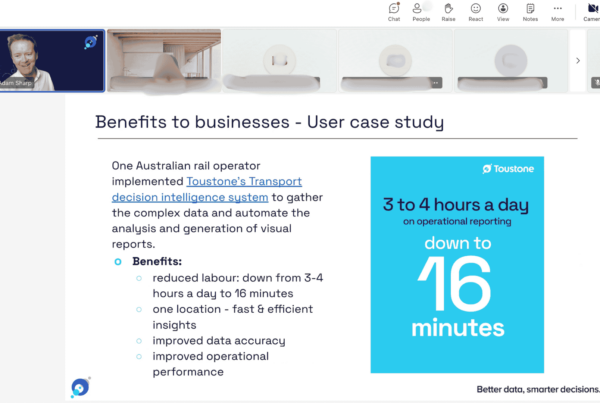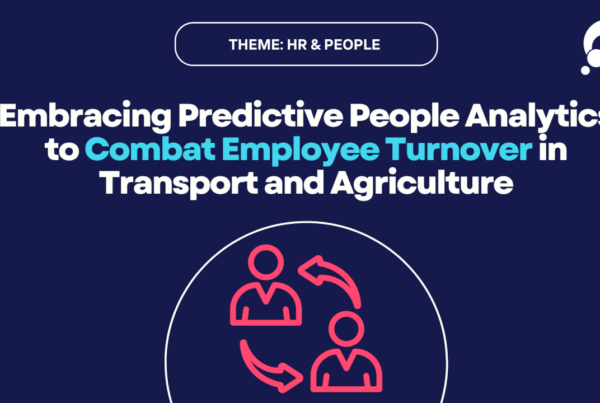For most large companies, manually generating reports to evaluate operational performance and service deliveries can take weeks, if not months. How much time do you spend fiddling with spreadsheets, moving data from one place to another just to build up a static and isolated report?
Manual reporting introduces further problems of which you may not be aware. Read on to find out how your manual reporting system jeopardises your business.
Four ways manual reporting impacts businesses
Data silos
In many business environments, data is gathered from multiple departments and sources. For the business to make decisions based on this data, it needs to be organised and communicated so that everyone involved understands what it means. Manual reporting gathers all relevant data from various sources and then relies on staff to analyse the information before creating a report.
The problem here is data silos. Each area works on reports that are not easily or fully accessible by other departments, so the information available to one department is unavailable or requires significant work to be shared with others. Data silos may not seem like a big deal, but this creates inconsistencies in data that may overlap across silos, leading to a deterioration of data quality, unreliable insight and delayed action greatly affecting your operations performance. This leads to the next key issue found with the manual reporting process.
Multiple versions of the truth
One of the easiest ways for errors to find their way into your data is by creating multiple versions of the truth.
Imagine you create a P&L report. You then pass this on to relevant co-workers to review and make adjustments. They send the report back to you to review and approve. You then pass it on to your superior who reviews and sends it back. You create the final version and send it to your superior, who then reviews and presents based on this report.
What happens if one person sends the wrong version? Or realises after the second or third review they made an error? Then there are even more versions of the same report in existence.
This is how manual reporting severely compromises your data integrity and adds unnecessary delays to the decision-making process.
The human factor
Manual reporting is prone to human error and bias. As the amount of data available grows exponentially, it becomes impossible for humans to handle it all. At some point, you’ll have to start manually filtering out what’s relevant and what isn’t, which is a dangerous path to take.
As data is gathered from multiple software sources like Salesforce, SAP, Xero, Netsuite, and others, plus devices like IoT sensors, then finally put into Excel spreadsheets and PowerPoint presentations – there are many touchpoints that create a huge concern for data integrity.
If you’ve ever tried typing numbers from an online report into Excel, you’ll know that mistyping or creating a formula error is all too easy – and not always noticed. One study found that when manually entering data into spreadsheets, the probability of an error was between 18% and 40%. The effects of even one error can result in bad decisions made from faulty data.
Time-consuming
Without question, manual reporting is labour-intensive and time-consuming. It takes hours each week to manually gather data to compile a simple P&L or service delivery report. It’s estimated the average worker spends 2.5 hours per day – that’s 30% of their workday – searching for information.
This not only hinders your leaders’ ability to make timely and effective decisions but prevents you from building confidence in your insights. It takes time to confirm each data insight against reports and seek direction from management. By the time a decision is made, the data is no longer current.
In today’s world, every minute counts. Manual reporting prevents you from making real-time decisions to act on current information. It focuses more time and attention on data validation than on data analysis. Huge amounts of time spent gathering information, costing your organsiation a great deal of time and resources to act on outdated insights.
Bring your organisation up-to-date with Decision Intelligence
Manual reporting is becoming a relic of the past. It is time-consuming, inefficient, inaccurate and expensive. It also lacks the scalability that modern businesses need to grow today.
Decision Intelligence propels your organisation into the future by building a solid data foundation that supports more effective insights and outcomes. Rather than spending weeks working on performance analysis, you can instantly see your operation in a centralised visual dashboard that displays only the information your need.
The best part is that you don’t have to be a data expert – that’s what we are for. The Toustone team is passionate about helping every organisation become more efficient and productive by maximising their data. We can work with you to develop a solid data foundation and apply a custom Decision Intelligence solution to enhance your transportation performance.
Contact Toustone today to get your transportation business on a speedy track to greater efficiency.



